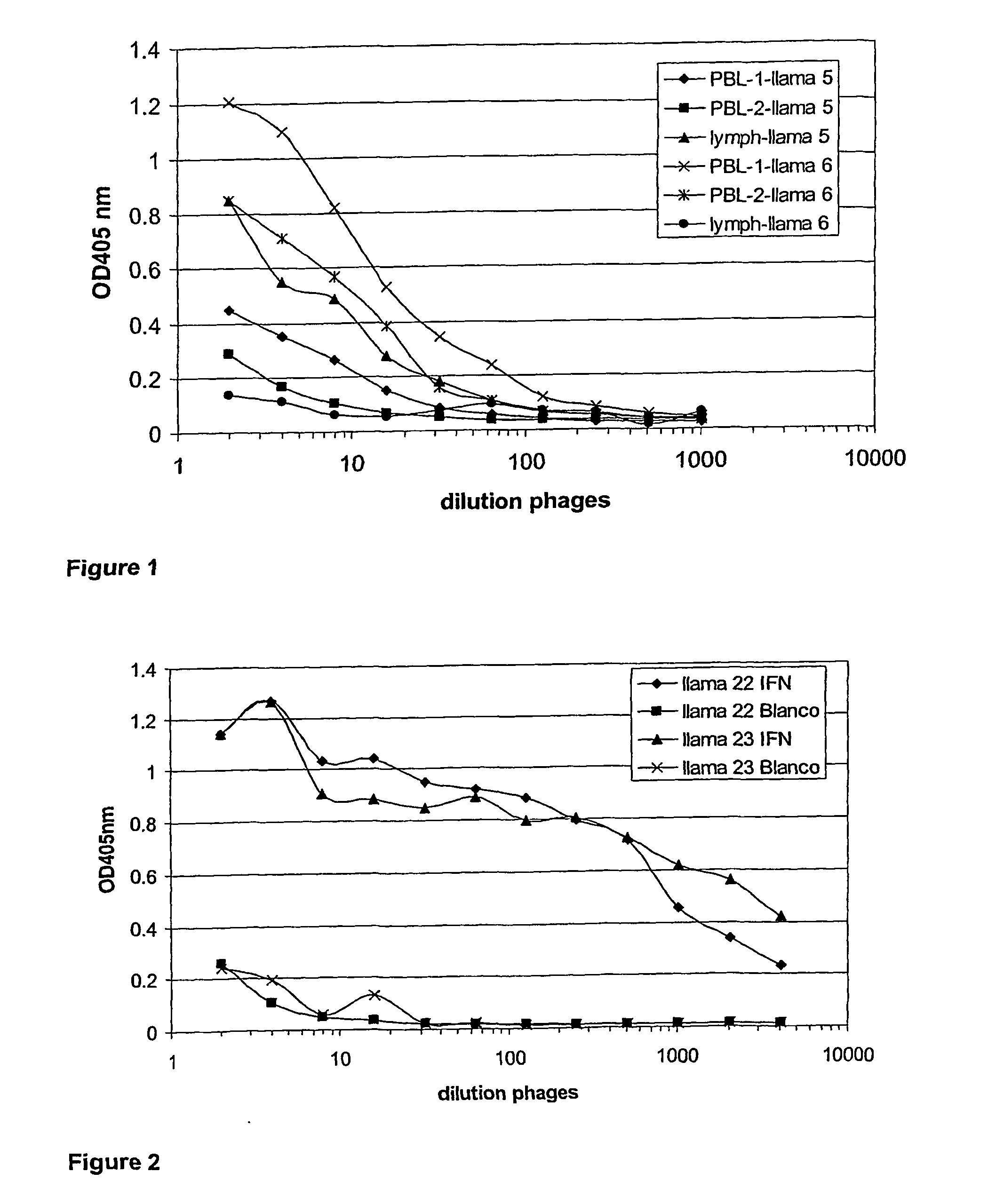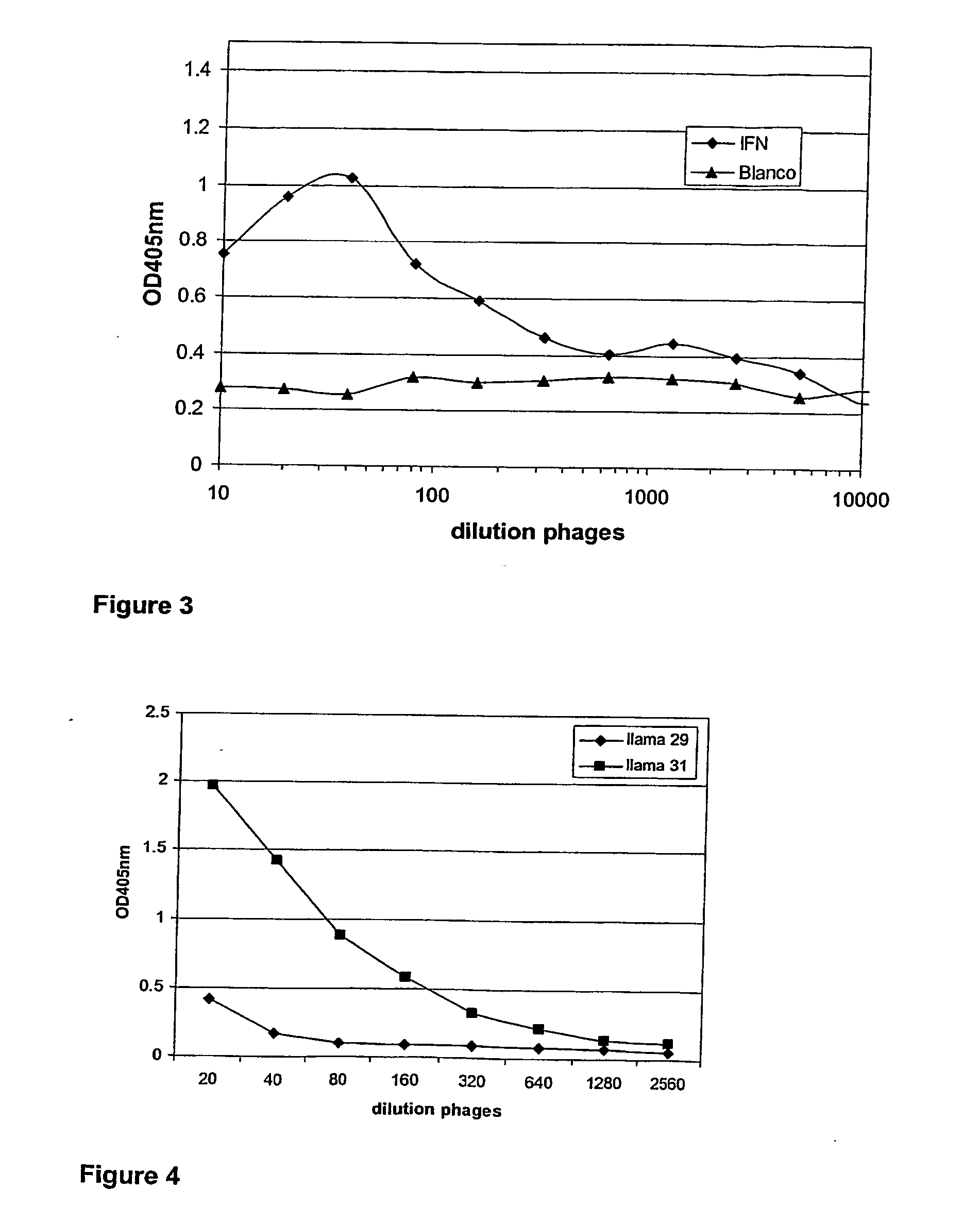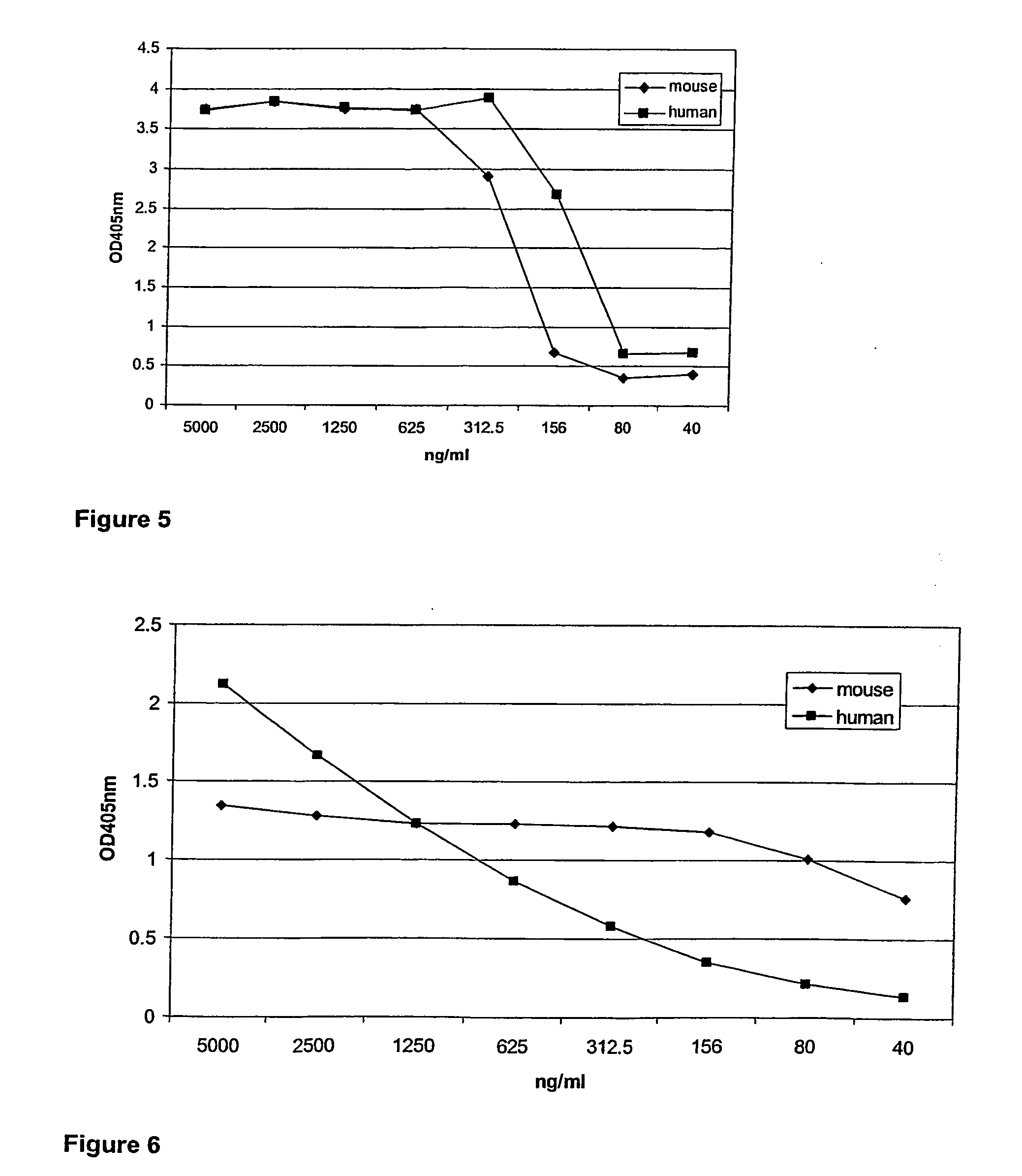Single domain antibodies directed against interferron-gamma and uses therefor
a single-domain antibody and interferon technology, applied in the field of polypeptides, can solve the problems of inability to fully treat the disease, difficult and long development process, and difficulty in raising conventional antibodies against multi-meric proteins, so as to increase the permeability of the intestinal mucosa
- Summary
- Abstract
- Description
- Claims
- Application Information
AI Technical Summary
Benefits of technology
Problems solved by technology
Method used
Image
Examples
example 1
Immunization
[0291] Four llama's (llama 5, 6, 22 and 23) were immunized intramuscularly with human IFN-gamma (PeproTech Inc, USA, Cat Nr: 300-02) using an appropriate animal-friendly adjuvant Stimune (Cedi Diagnostics BV, The Netherlands). Two llama's (llama 29 and 31) were immunized intramuscularly with mouse IFN-gamma (Protein Expression & Purification core facility, VIB-RUG, Belgium) using an appropriate animal-friendly adjuvant Stimune (Cedi Diagnostics BV, The Netherlands). The llama's received 6 injections at weekly intervals, the first two injections containing each 100 μg of IFN-gamma, the last four injections containing each 50 μg of IFN-gamma. Four days after the last immunization a blood sample (PBL1) of 150 ml and a lymph node biopsy (LN) was collected from each animal and sera were prepared. Ten days after the last immunization a second blood sample (PBL2) of 150 ml was taken from each animal and sera were prepared. Peripheral blood lymphocytes (PBLs), as the genetic so...
example 2
[0292] cDNA was prepared on 200 μg total RNA with MMLV Reverse Transcriptase (Gibco BRL) using oligo d(T) oligonucleotides (de Haard et al., 1999). The cDNA was purified with a phenol / chloroform extraction, followed by an ethanol precipitation and subsequently used as template to amplify the VHH repertoire.
[0293] In a first PCR, the repertoire of both conventional (1.6 kb) and heavy-chain (1.3 kb) antibody gene segments were amplified using a leader specific primer (5′-GGCTGAGCTCGGTGGTCCTGGCT-3′) and the oligo d(T) primer (5′-AACTGGAAGAATTCGCGGCCGCAGGAATTTTTTTTTTTTTTTTTT-3′). The resulting DNA fragments were separated by agarose gel electrophoresis and the 1.3 kb fragment encoding heavy-chain antibody segments was purified from the agarose gel. A second PCR was performed using a mixture of FR1 reverse primers (WO03 / 054016 sequences ABL037 to ABL043) and the same oligo d(T) forward primer.
[0294] The PCR products were digested with SfiI (introduced in the FR1 prim...
example 3
Rescue of the Library and Phage Preparation
[0295] The library was grown at 37° C. in 10 ml 2×TY medium containing 2% glucose, and 100 μg / ml ampicillin, until the OD600nm reached 0.5. M13KO7 phages (1012) were added and the mixture was incubated at 37° C. for 2×30 minutes, first without shaking, then with shaking at 100 rpm. Cells were centrifuged for 5 minutes at 4,500 rpm at room temperature. The bacterial pellet was resuspended in 50 ml of 2×TY medium containing 100 μg / ml ampicillin and 25 μg / ml kanamycin, and incubated overnight at 37° C. with vigorously shaking at 250 rpm. The overnight cultures were centrifuged for 15 minutes at 4,500 rpm at 4° C. Phages were PEG precipitated (20% poly-ethylene-glycol and 1.5 M NaCl) for 30 minutes on ice and centrifuged for 20 minutes at 4,500 rpm. The pellet was resuspended in 1 ml PBS. Phages were again PEG precipitated for 10 minutes on ice and centrifuged for 10 minutes at 14,000 rpm and 4° C. The pellet was dissolved in 1 ml PBS-0.1% cas...
PUM
| Property | Measurement | Unit |
|---|---|---|
| temperature | aaaaa | aaaaa |
| particle size | aaaaa | aaaaa |
| concentration | aaaaa | aaaaa |
Abstract
Description
Claims
Application Information
 Login to View More
Login to View More - R&D
- Intellectual Property
- Life Sciences
- Materials
- Tech Scout
- Unparalleled Data Quality
- Higher Quality Content
- 60% Fewer Hallucinations
Browse by: Latest US Patents, China's latest patents, Technical Efficacy Thesaurus, Application Domain, Technology Topic, Popular Technical Reports.
© 2025 PatSnap. All rights reserved.Legal|Privacy policy|Modern Slavery Act Transparency Statement|Sitemap|About US| Contact US: help@patsnap.com



